How to Choose the Right Garden Hose
- March 28, 2024
- 0 comment
Selecting the perfect garden hose involves considering various factors like yard size, climate, and budget. The ideal hose balances material, durability, and flexibility to match your gardening needs. Length, diameter, and fittings will influence water flow and coverage, while the choice of nozzle or wand should align with your watering tasks. The right garden hose will efficiently maintain your lawn, garden, and landscape.
Popular Water Hose Types
When it comes to garden hoses, one size doesn’t fit all. Here’s a refined look at the types available, each serving a unique purpose in the garden:
1. Standard Garden Hose

The versatile workhorse of the garden world, adept at handling a wide range of tasks, from nurturing your garden’s flora to powering through patio clean-ups. With its availability in diverse materials like durable rubber or lightweight vinyl, and lengths tailored to any yard size, it stands as the foundational tool in garden upkeep. This hose type balances flexibility with durability, ensuring it can navigate around corners and withstand regular use, making it an indispensable ally for both avid gardeners and casual outdoor enthusiasts. Its adaptability and reliability make the standard garden hose a staple in any gardening arsenal, providing consistent performance across various outdoor tasks.
2. Soaker Hose
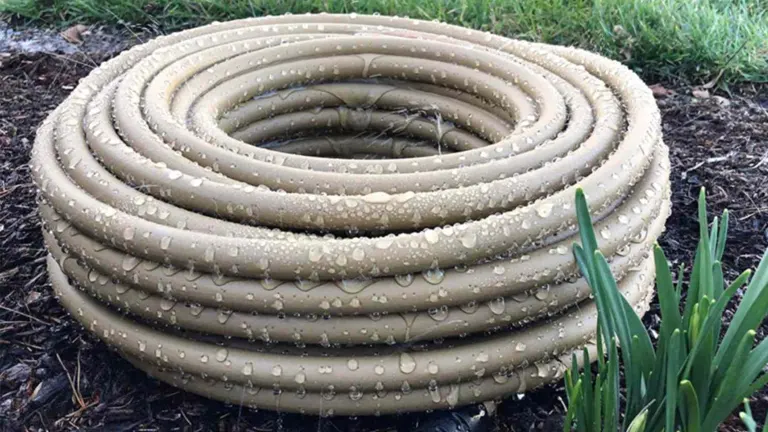
Known as the silent hydrator, this hose is expertly designed to water soil and plants with meticulous precision. Featuring a perforated surface, it allows water to seep out slowly and directly, targeting the roots for deep, efficient hydration without any wasteful runoff or overspray. Ideal for establishing strong, healthy plant foundations, the soaker hose provides a steady, gentle flow that encourages root growth and optimizes water usage. Its discreet operation and targeted watering capabilities make it a favorite among gardeners who prioritize the health of their plants and conservation of water, ensuring that every drop serves a purpose in nurturing your garden.
3. Sprinkler Hose
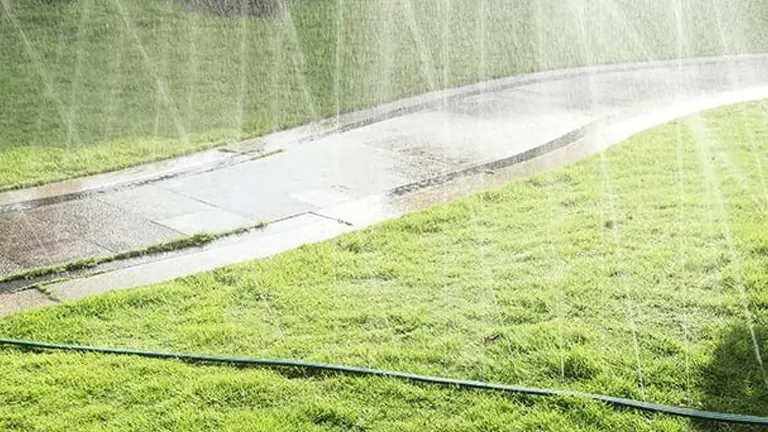
The ultimate blend of efficiency and coverage, the sprinkler hose combines the deep, even soaking abilities of a soaker hose with the expansive reach of a sprinkler system. Designed to uniformly water larger green spaces, it distributes moisture evenly across its length through a series of holes or nozzles on the top, mimicking rainfall. This dual functionality makes it perfect for maintaining lush lawns, extensive flowerbeds, and sizeable vegetable gardens, ensuring every inch receives adequate hydration. With the sprinkler hose, gardeners can achieve thorough and consistent watering, promoting healthy growth across vast areas without the need for multiple watering tools.
4. Flat Hose
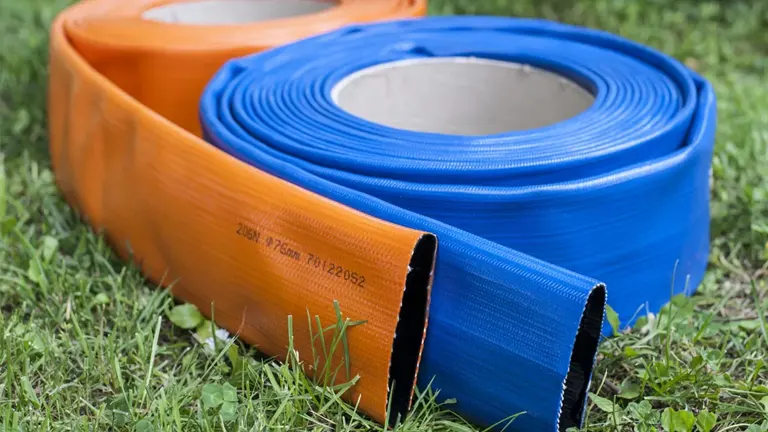
This hose is the epitome of space-saving design, lying flat and discreet when inactive, yet expanding robustly under water pressure to fulfill its watering duties. Ideal for those who face storage constraints yet require full hose functionality, it offers an efficient solution without occupying significant space. Its design not only facilitates easy storage in tight spots but also ensures quick deployment and hassle-free usage. The flat hose is especially beneficial for individuals who need to navigate through small gardens or tight spaces, providing the convenience of a full-sized hose without the bulk, making it a smart choice for maximizing utility and minimizing storage demands.
5. Coiled Hose
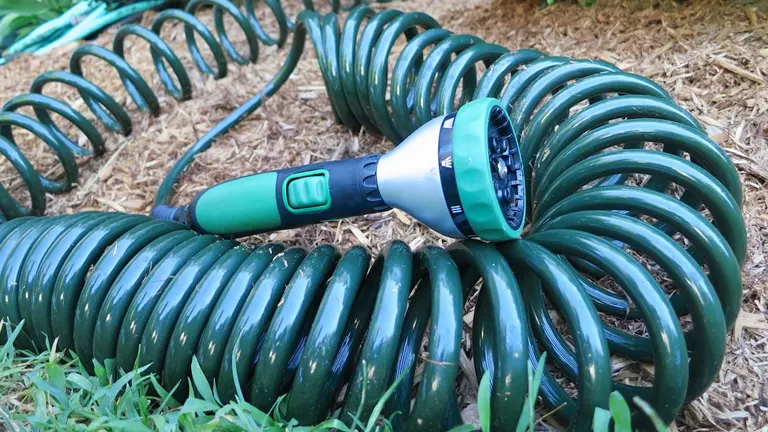
Engineered for optimum space efficiency, the coiled hose boasts a spiral design that’s perfect for small gardens or specific watering needs. Its standout feature is the ability to spring back into a compact coil after use, eliminating the hassle of tangling and reducing storage space requirements. This design not only makes it a practical choice for confined areas but also ensures targeted watering with ease and precision. Ideal for patio plants, balcony greenery, or tight garden corners, the coiled hose offers the convenience of quick deployment and retraction, making it a preferred option for gardeners who value both functionality and order in their gardening tools.
6. Expandable Garden Hose
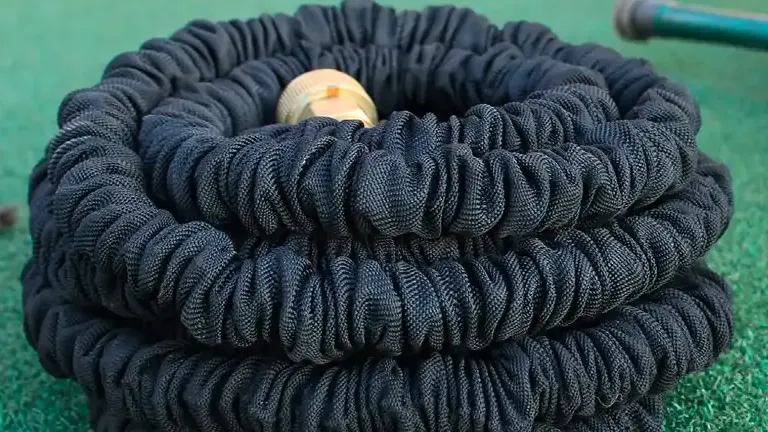
This hose represents a breakthrough in garden tool design, capable of expanding up to three times its length when filled with water and retracting to a manageable size once emptied. Its lightweight and flexible nature makes it a standout choice for those with restricted storage space or for gardeners who value convenience and ease of use. The expandable garden hose is designed to eliminate the struggles of maneuvering and storing traditional bulky hoses, providing an efficient, space-saving solution without compromising on watering capabilities. Ideal for small to medium-sized gardens, it offers the versatility and performance needed to manage a variety of watering tasks with minimal effort.
7. RV/Marine Hose
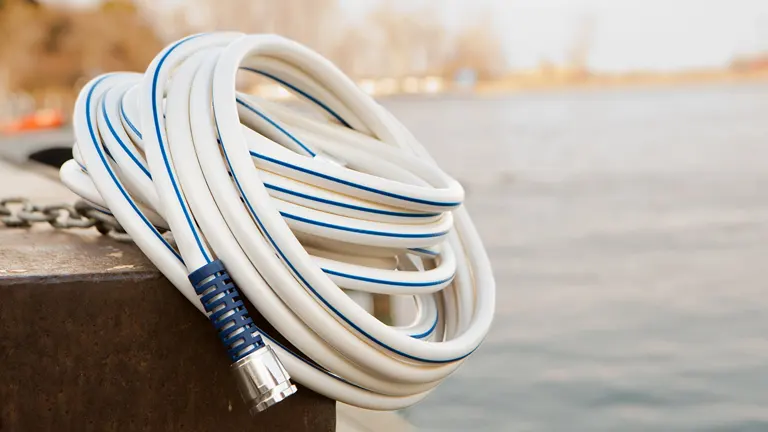
Specifically designed for the traveler, this hose is the epitome of safety and convenience, ensuring that the water you consume is both clean and safe. Crafted from non-toxic materials, it’s the go-to choice for RVs, campers, and boats, providing a reliable water source while on the move. The RV/Marine Hose is built to withstand the rigors of travel, resistant to the wear and tear that comes with constant movement and exposure to various environmental elements. Its durability, coupled with its health-safe construction, makes it an essential item for any travel enthusiast looking to maintain a supply of potable water, proving its indispensability in the mobile lifestyle.
8. Drinking Water Hose
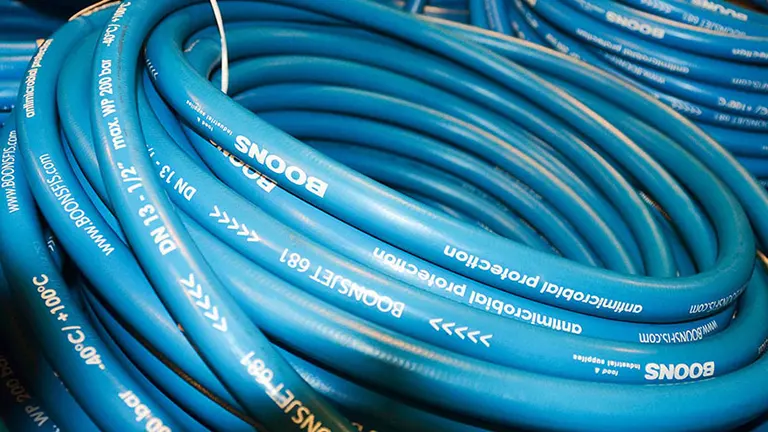
The health-conscious choice is meticulously crafted to be free from harmful chemicals, ensuring your drinking water is safe. Infused with antimicrobial protection, this hose prevents the growth of harmful microorganisms, making it essential for anyone in need of a reliable and clean source of potable water for their outdoor spaces.
9. Metal Garden Hose

This hose is the armored titan in the garden tool realm, offering unmatched resistance to punctures and kinks due to its robust metallic construction. Despite its formidable strength, it remains surprisingly lightweight, making it easy to maneuver around your garden without sacrificing durability. The metal garden hose stands up to harsh environmental challenges, from extreme weather to rough terrain, ensuring a reliable performance year after year. Its steadfast nature makes it a wise long-term investment for gardeners and homeowners who demand the utmost in durability and reliability, securing its status as a top-tier choice for those who refuse to compromise on quality and resilience.
Garden Hose Materials, Flexibility & Durability
Choosing the right garden hose material is like selecting the perfect pair of gardening gloves: it needs to fit your tasks and environment perfectly. Here’s a deeper dive into the world of garden hose materials:
- Vinyl Hoses: The cost-effective choice for the casual gardener, vinyl hoses are light and easy to handle, perfect for mild weather and light watering duties. However, their affordability comes with a trade-off in durability and resilience.
- Rubber Hoses: The heavyweights of the hose world, rubber hoses are built to last, offering superior flexibility and enduring the rigors of varying climates and tough tasks. Their robust nature makes them a pricier option but a worthwhile investment for serious gardeners.
- Combo Hoses: A hybrid of vinyl’s lightness and rubber’s toughness, these hoses strike a balance between ease of use and long-lasting durability. They often feature additional layers or protective mesh to resist snags and punctures, marrying flexibility with resilience.
Flexibility is key in a garden hose, allowing for easy navigation around corners and storage convenience. However, too much flexibility can lead to kinks and water flow interruptions. A hose’s durability is also tied to its intended use, ranging from light-duty for occasional gardening to super-duty for intensive tasks and harsh conditions
Best Garden Hose Length
Selecting the optimal garden hose length is paramount to ensuring your watering is both efficient and comprehensive, covering all areas of your garden with minimal need for repositioning. To achieve this, measure the distance from your water source to the furthest point of your garden, adding a bit extra to the length for maneuverability and to prevent any strain on the hose. Garden hoses come in a variety of lengths, starting from 10 feet (3.0 m) up to 100 feet (30 m) or more, catering to different sized properties and specific needs. For smaller gardens, a 25-foot (7.6 m) hose may suffice, while expansive areas might necessitate a 100-foot (30 m) hose or longer.
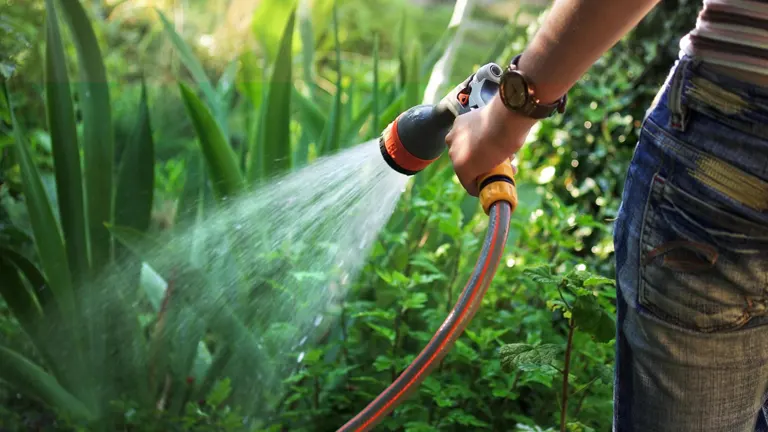
Furthermore, the diameter of the hose plays a critical role in determining water flow and pressure. A 1⁄2 inch (1.3 cm) diameter hose typically delivers about 9 gallons (34 L) of water per minute, suitable for basic gardening tasks. For more demanding watering needs, a 5⁄8 inch (1.6 cm) diameter increases the flow to about 17 gallons (64 L) per minute, and a 3⁄4 inch (1.9 cm) hose offers around 23 gallons (87 L) per minute. Remember, the larger the hose diameter, the more water it can deliver with less pressure loss over distance, making it crucial to balance hose length and diameter with your garden’s specific watering requirements.
Water Hose Sizes and Fittings
The diameter and fittings of your garden hose are crucial components that significantly affect its functionality and water flow. Common hose diameters range from 1/2 to 3/4 inches, catering to diverse gardening requirements. For optimal performance and longevity, consider hoses with cast brass fittings, renowned for their durability and crush-proof nature, which denote a high-quality hose less prone to damage or the need for replacements.
Garden Hose Nozzles
When it comes to hose nozzles, the material, and adjustability play pivotal roles. Brass nozzles, known for their superior fit and extended lifespan, can drastically reduce leaks and enhance watering flexibility. They allow for adjustments from fine sprays, ideal for delicate plants, to strong streams, perfect for rigorous cleaning tasks.
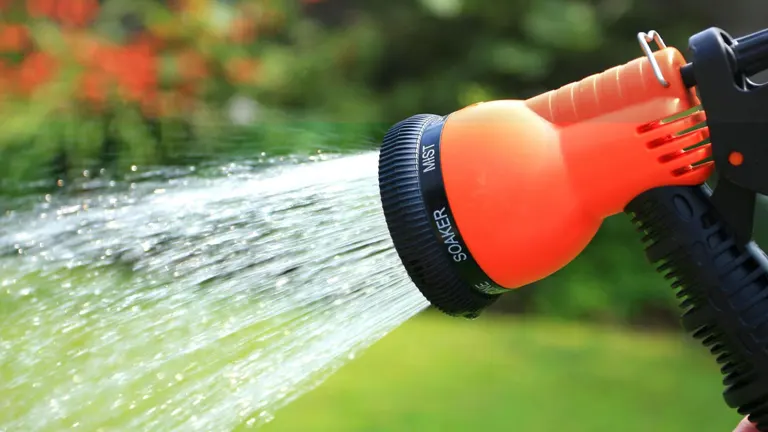
Before making a purchase, conduct a practical kink test in the store by unrolling about 2 feet (0.61 m) of hose and bending it in half. Despite many hoses being marketed as kink-free, real-world testing can reveal their true resilience, helping you select a hose that bends efficiently without kinking, thus ensuring a smooth and uninterrupted water flow for your gardening needs.
Garden Hose Maintenance
Ensuring the durability and reliability of your garden hose involves comprehensive maintenance and attentive care. Storing your hose on a reel is not only practical for preventing damage like bends or kinks but also enhances the ease of transport and use around your garden, whether on a mobile cart or mounted to a wall. Regularly coiling your hose neatly on the reel after each use can significantly extend its lifespan.
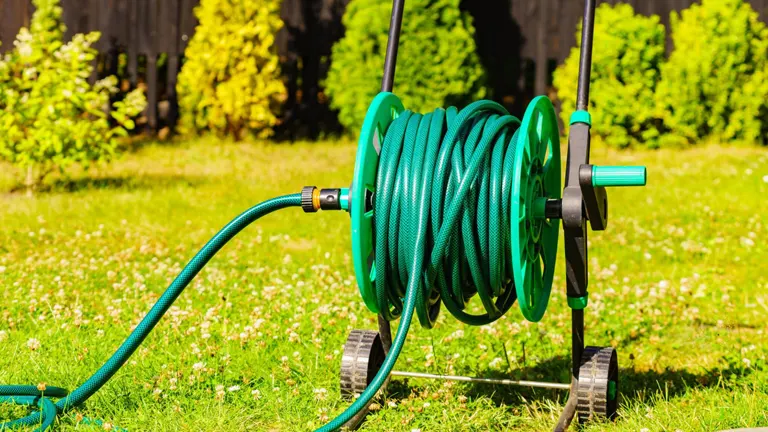
Before the onset of cold weather, it’s crucial to thoroughly drain your hose to prevent water from freezing inside, which can lead to damage. Elevate one end of the hose to let gravity help empty it completely, ensuring it’s free of any residual water that could freeze and expand, causing cracks or bursts in the material.
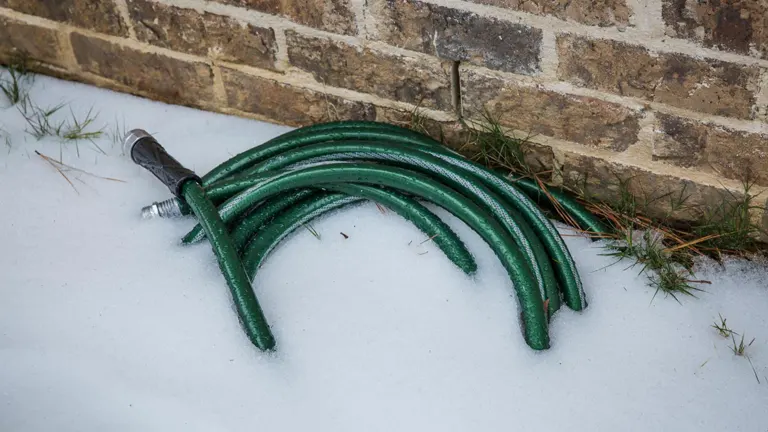
During the winter months, it’s advisable to store your hose indoors, where it’s shielded from the harsh elements that can cause the material to contract and potentially crack. A garage or basement serves as an ideal storage space, keeping the hose in optimal condition until it’s time to use it again in warmer weather. Following these maintenance and storage tips will help maintain your garden hose’s integrity and functionality, making it a steadfast tool in your gardening activities through the seasons.
Understanding PSI Ratings in Garden Hoses
When you’re in the market for a new garden hose, you’ll encounter the term “PSI” (pounds per square inch), a crucial indicator of the hose’s pressure capacity. PSI ratings determine the amount of pressure a hose can handle without failing.
- Light-duty hoses: These typically have PSI ratings around 200, making them suitable for basic gardening and watering tasks. They’re designed for lighter use where lower water pressure is needed.
- Heavier-duty hoses: These can handle much higher pressures, with ratings up to 600 PSI. They’re ideal for more demanding tasks and can be paired with pressure washers, provided the hose’s PSI rating matches or exceeds the washer’s requirements.
For regular home and garden use, a hose with a PSI rating of around 350 is generally sufficient, as most residential water systems operate between 45 to 80 PSI. It’s important to match the hose’s PSI rating with your specific needs, especially if you plan to use it with high-pressure equipment. Always refer to your pressure washer’s manual to ensure compatibility with the garden hose’s PSI rating.
Conclusion
Selecting the optimal garden hose hinges on aligning it with your gardening requirements, the dimensions of your outdoor space, and how much effort you’re willing to put into hose maintenance. By carefully considering these aspects, you can ensure that your garden stays lush and vibrant, with a hose that efficiently meets your watering needs and stands the test of time.
FAQs
- What’s the secret to picking the perfect garden hose length?
Measure the furthest point in your garden from the water source and add a few extra feet to ensure easy reach without constant repositioning. The ideal length allows you to water all areas comfortably without excess hose getting in the way. - Can a garden hose really impact my plants’ health?
Yes, the right garden hose can make a significant difference. For example, soaker hoses deliver water directly to the roots with minimal waste, promoting healthier plant growth and conserving water. - Why are metal hoses not as popular despite their durability?
Metal hoses, while durable and kink-resistant, can be heavier and more expensive than other types. They’re also less flexible, which can make them cumbersome for everyday gardening tasks. - Is there a garden hose that can double as a sprinkler system?
Sprinkler hoses are designed for this dual function, laying on the ground to soak an area or turned upside down to sprinkle, providing versatility for garden watering needs. - How does water pressure affect my choice of garden hose?
The hose diameter and length influence water pressure; wider and shorter hoses generally deliver higher pressure. Consider your garden’s water pressure needs when selecting a hose to ensure it performs optimally. - Can the wrong garden hose be harmful to my health?
Yes, hoses not labeled as ‘drinking water safe’ may release harmful chemicals into the water, posing a health risk. Always use hoses specifically designed for safe water consumption for such needs. - What are the signs of a high-quality garden hose fitting?
High-quality fittings are usually made of brass or stainless steel, offering durability and a tight seal to prevent leaks. They should fit securely to your tap and attachments without stripping or corroding. - How can I prevent my garden hose from kinking and getting damaged?
Choose a hose with anti-kink technology or sufficient thickness to prevent kinks. Regularly straighten out your hose during use and store it properly on a hose reel to avoid damage. - Why would I need a garden hose with different nozzle settings?
Adjustable nozzles provide versatility for various tasks, from gentle misting for delicate plants to strong jets for cleaning. They allow you to customize the water flow to suit your specific gardening and cleaning needs. - What’s the best way to store a garden hose during winter?
Drain the hose completely to prevent water from freezing and expanding, which can damage the hose. Store it in a dry, frost-free environment like a garage or shed to protect it from winter weather.
We’ve navigated the twists and turns of choosing the right garden hose together, but the conversation doesn’t end here. Your experiences, tips, and stories can help make everyone’s garden greener and more bountiful. Share your thoughts and join the discussion below. Have you found a garden hose that’s changed the game for you? Let us know in the comments!
For more expert gardening advice, don’t stop here. Dive into our guides, unearth top recommendations in our best section, and get the dirt on products with our in-depth reviews. Together, let’s cultivate a community of garden enthusiasts where knowledge flows as freely as water through the perfect garden hose.

David Murray
Forestry AuthorI'm David Murry, a forestry equipment specialist with a focus on chainsaw operation. With over 13 years of experience, I've honed my skills in operating and maintaining a wide range of machinery, from chainsaws to log splitters. My passion for the outdoors and commitment to sustainable forestry drive my work, which emphasizes safety, efficiency, and staying updated with industry advancements. Additionally, I'm dedicated to sharing my expertise and promoting environmental awareness within the forestry community.


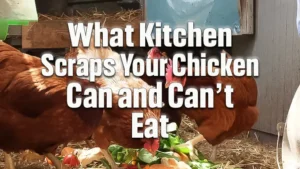
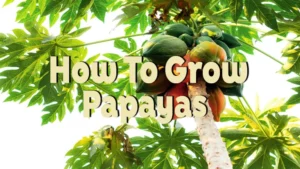


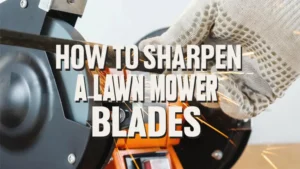


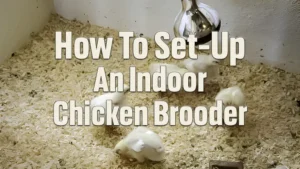


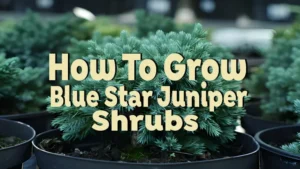
Leave your comment